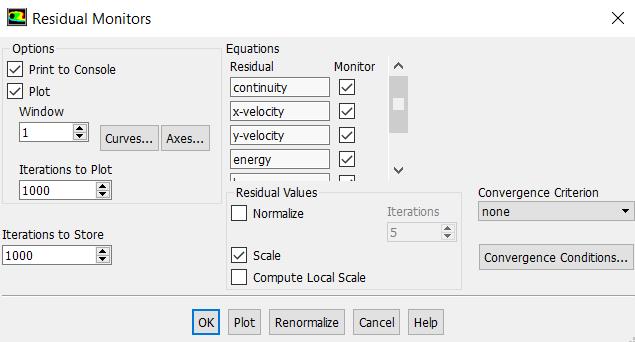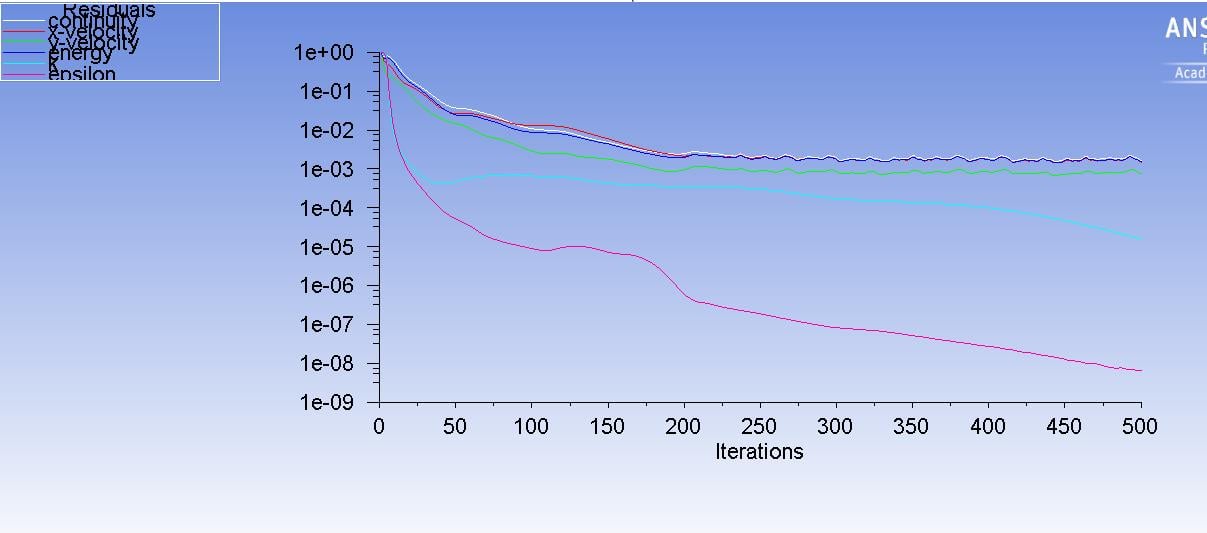-
-
January 30, 2018 at 8:40 pm
keans0018
Subscriberi had a very high lift coefficient and the pressure coefficient does not looks right. This is the fluent setup: 1) i am using C-domain with 40,000 mesh elements with 40,400 nodes. 2) i am using density-based since i am doing a test with high speed flow where the mach number is above one. 3) model: k-epsilon standard. 4) Air properties, density is in ideal-gas. 5) Cell-zone condition: the pressure gauge is 101325 Pa 6) i am using pressure far-field, the inputs are: 0 pressure gauge; Mach = 2 ; AOA = 1 degree. 7) the solution methods and controls remain default.
 i ran the iteration between 500-1000
i ran the iteration between 500-1000
This were the method i get the lift coefficient. Under the Reports > Forces > x ( -ve sin 1) ; y (+ve cos 1). This will print out on the console, and the lift force was about 11 KN, i will put this value into excel and calculate the lift coefficient by rearranges the lift equation. which is about Cl= 11.0 ++
I am seeking for help from my lecturer, he can't help me either since he is not familiar in supersonic flow conditions.

The Lift force: 11,342.087 N, its very high... really needs help
-
January 30, 2018 at 8:44 pm
Raef.Kobeissi
SubscriberWhats the dimensions of the airfoil? Did you make sure you set the case with the right units? How does your residual error plots look like, could you attach a picture of it + velocity contour please.
Best Regards -
January 30, 2018 at 8:58 pm
-
January 30, 2018 at 10:05 pm
-
January 31, 2018 at 12:49 am
keans0018
Subscriberok i got my mistakes now, i forgot to change the velocity from my equation, that's why my lift coefficient went wrong. Thanks anyway.
-
- The topic ‘high lift coefficient and weird pressure coefficient on cfd fluent’ is closed to new replies.



-
3762
-
1333
-
1168
-
1090
-
1014

© 2025 Copyright ANSYS, Inc. All rights reserved.













